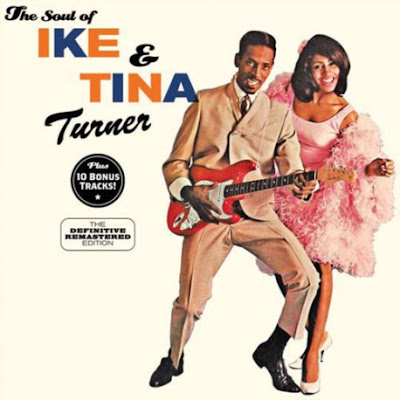Tina Turner: The Queen of Rock 'n' Roll's Journey From Nutbush to Global Immortality
She entered the stage not as a performer, but as a force of nature. A whirlwind of energy, legs that could outrun any problem, a voice that could shake stadiums, and a story of survival that would inspire millions. This is Tina Turner. Born Anna Mae Bullock in the cotton fields of Tennessee, she transformed herself into one of the most electrifying performers in music history—the undisputed Queen of Rock 'n' Roll. Her journey is a five-decade epic of talent, trauma, triumph, and transcendence. From the abusive crucible of her partnership with Ike Turner to her phoenix-like solo rebirth in her 40s, Tina's story isn't just about music; it's about the unyielding power of the human spirit. So, let's get ready to take you on a journey through the life of a woman who taught the world that you can be both a survivor and the main attraction, proving that what's love got to do with it? Everything.
THE ULTIMATE TINA TURNER AUDIO ANTHOLOGY
TOP 33 TINA TURNER SONGS VISUAL JOURNEY [VIDEO PLAYLIST]
The Burning Questions: Your Tina Turner FAQ Answered
What are some of Tina Turner's most famous songs?
Tina's discography is a treasure trove of anthems. Her signature solo hits include "What's Love Got to Do with It," "Private Dancer," "The Best," "We Don't Need Another Hero," and "Simply the Best." With Ike Turner, classics like "Proud Mary," "River Deep – Mountain High," and "A Fool in Love" defined an era of explosive rhythm and blues.
What was Tina Turner's original name?
She was born Anna Mae Bullock on November 26, 1939, in Brownsville, Tennessee. The iconic name "Tina Turner" was given to her by Ike Turner when she joined his band, a brand he created that would ultimately become larger than life.
What is Tina Turner known for?
Tina Turner is known as the "Queen of Rock 'n' Roll" for her raw, powerful vocals, her electrifying and physically demanding live performances, her iconic legs and wild hairstyles, and her incredible comeback story. She broke barriers for Black women in rock music and became a global symbol of resilience and empowerment.
Where was Tina Turner from?
She was born in Brownsville, Tennessee, and raised in the rural nearby town of Nutbush, Tennessee, which she would later immortalize in her song "Nutbush City Limits."
How did Tina Turner become famous?
Her fame came in two powerful waves. First, she rose to prominence in the 1960s as the explosive frontwoman of the Ike & Tina Turner Revue. Second, and most remarkably, she achieved global superstardom as a solo artist in her 40s with her multi-platinum 1984 album "Private Dancer," staging one of the greatest comebacks in music history.
From Anna Mae to Tina: The Birth of a Star
The story begins in the humblest of settings. Anna Mae Bullock's early life in Nutbush, Tennessee, was defined by hardship. Her parents, Floyd and Zelma Bullock, were sharecroppers, and they abandoned the family when Anna Mae was just a child, leaving her and her sister to be raised by strict, religious grandparents. The rural isolation of Nutbush was stark, but it was in the local church choir that the young girl first discovered the power of her voice—a voice that could fill a room with spirit and soul.
As a teenager, she moved to St. Louis to live with her mother. It was there, in 1956, that fate intervened. She attended a performance by Ike Turner and his Kings of Rhythm at the Manhattan Club. Drawn to the music, the bold 17-year-old Anna Mae grabbed the microphone during an intermission and sang a B.B. King song. Ike Turner, a talented but volatile musician and bandleader, was stunned. He wasn't just impressed; he saw a star. He immediately invited her to join his band, and while she was initially just a background vocalist, her raw, explosive talent was impossible to contain.
The Ike & Tina Turner Revue: A Torrid Ascent
Ike quickly recognized that Anna Mae was his ticket to the big time. In 1960, he created a new identity for her: "Tina Turner." He even trademarked the name, ensuring he would control her career. The newly christened Tina's first lead vocal on "A Fool in Love" became a surprise smash, reaching No. 2 on the R&B charts and crossing over to the pop charts. The Ike & Tina Turner Revue was born, and it became one of the most dynamic and relentless touring acts in the world.
Their act was pure, unadulterated energy. Tina was the undeniable focal point—a whirling dervish in a mini-dress, with a voice that was part gospel roar, part rock and roll scream, and entirely unique. They churned out R&B hits and built a reputation as a must-see live act. Their 1966 cover of Creedence Clearwater Revival's "Proud Mary" became their signature, earning them a Grammy Award and immortalizing Tina's spoken-word intro: "We never, ever do nothing nice and easy."
Producer Phil Spector saw Tina's transcendent potential and crafted the monumental "River Deep – Mountain High" for her in 1966. While it was a flop in the US, it was a massive hit in Europe, signaling Tina's future global appeal. Behind the glamour and success, however, was a dark and terrifying reality. Ike Turner was a controlling and violently abusive husband. The marriage, which began in 1962, was a prison of physical and psychological torment that Tina endured for over a decade.
The Great Escape: Walking Away With Nothing But Her Name
In 1976, after a brutal beating before a performance in Dallas, Tina Turner made the most courageous decision of her life. She fled. With just 36 cents and a gas station credit card to her name, she escaped the hotel, ran across a freeway, and found sanctuary. She later described the moment: "I looked at him and I thought, 'You've beat me for the last time, you s.o.b.'"
The divorce was finalized in 1978. In a stunning act of self-preservation, she bargained away all her future royalties from their songs together, her share of their homes, and even the Ike & Tina Turner name. She kept only one thing: the name Tina Turner. It was all she needed. For the next several years, she worked tirelessly to rebuild her career from the ground up, performing in hotel lounges and on TV variety shows, determined to pay off the massive debt she incurred from canceled tours and to support her four sons.
The Phoenix: The "Private Dancer" Phenomenon
By the early 1980s, many in the industry had written her off as a nostalgia act. But Tina Turner was just getting started. Her relentless touring caught the attention of new wave British band Heaven 17, who invited her to record a cover of the Temptations' "Ball of Confusion." This led to a solo deal with Capitol Records in the UK.
In 1984, at the age of 44, she released Private Dancer. The album was a seismic event. It was a perfect fusion of rock, pop, and soul that showcased her matured, raspy voice with a new vulnerability and depth. The lead single, "What's Love Got to Do with It," became a global phenomenon, topping the Billboard Hot 100 and turning Tina Turner into a household name for a new generation. The album sold over 20 million copies worldwide and earned her three Grammy Awards, including Record of the Year.
She was no longer Ike's Tina; she was simply, and powerfully, TINA. She had become the heroine of her own story, an icon of survival and success on her own terms. Her follow-up albums, including Break Every Rule (1986) and Foreign Affair (1989), solidified her status as a global rock superstar. Her cover of "The Best" became another timeless anthem, synonymous with her indomitable spirit.
Acting, Authorship, and a New Life in Europe
Tina's talents extended beyond the recording studio. She proved a natural on the big screen, starring as the formidable Aunty Entity in George Miller's Mad Max Beyond Thunderdome (1985). Her performance and the film's hit song, "We Don't Need Another Hero," further cemented her status as a pop culture titan.
In 1986, she co-wrote her autobiography, I, Tina, with Kurt Loder, bravely detailing the abuse she suffered. The book was adapted into the acclaimed 1993 biopic What's Love Got to Do with It, starring Angela Bassett, which introduced her story of survival to millions more. She later found love and stability with German music executive Erwin Bach, whom she met in 1986. She relocated to Switzerland, becoming a Swiss citizen in 2013 and finally finding the peace she had long deserved.
The Final Bow and an Immortal Legacy
Tina's career continued to blaze into the new millennium with successful albums like Wildest Dreams (1996) and record-breaking global tours. Her 2000 "Twenty Four Seven Tour" was billed as her farewell, and she largely retired from the public eye afterward, enjoying her hard-won peace in Switzerland with Bach, whom she married in 2013.
The honors continued to pour in. She received a Grammy Lifetime Achievement Award in 2018. In a fitting full-circle moment, she was inducted into the Rock & Roll Hall of Fame as a solo artist in 2021, having been inducted with Ike back in 1991. The acclaimed documentary Tina (2021) served as her final public statement, a powerful capstone on a life lived without compromise.
Tina Turner passed away on May 24, 2023, at her home in Switzerland at the age of 83. The world mourned the loss of a true original. She was more than a singer; she was a symbol. A symbol of strength, resilience, and the transformative power of believing in yourself. She wasn't just the Queen of Rock 'n' Roll; she was the queen of her own destiny, and her legacy of music and courage will simply be the best, better than all the rest.








No comments: